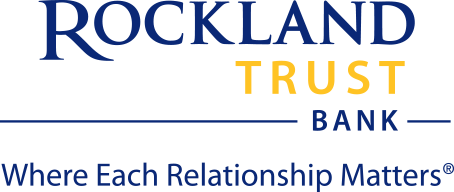Buying a home is an exciting personal and financial milestone. As a homeowner, you likely want to understand your options should you ever have to tap into your home’s equity.
Simply put, you may want to consider a home equity line of credit (HELOC). But what, exactly, does that mean, and what should you know when speaking with your banker? What are both the benefits and limits of this financial product? And how can you know if this is the right fit?
What is a home equity line of credit?
Rockland Trust offers two different home equity products to help you access equity for certain needs and projects: a home equity loan and a home equity line of credit (HELOC). Home equity loans use the equity in a home as collateral to lend a specific amount of money at a fixed rate and fixed term. The main purpose of this product is to provide financing for a specific purpose and for those who don’t need flexibility. These loans are used for minor home improvement projects or financial strategies like debt consolidation.
A HELOC, meanwhile, is a revolving line of credit that you can draw on for a set period of time to help with your financial goals. During the draw period, you only need to make payments on the interest of the outstanding amount. Once the drawing period ends you enter into the repayment period where you begin making principal and interest payments for the remaining term. There is also the option to lock in a specific amount of the HELOC into a fixed amount, fixed term and fixed rate without losing access to flexibility.
A significant benefit of a HELOC is its flexibility: you can use it when and how you need it. This can work well for considerable expenses like home improvements or taxes or paying for higher education, or to help consolidate debt when you don’t have enough cash on hand for coverage.
If this sounds like a good option, it’s important to keep in mind the best ways to use this line of credit and what the limitations are before applying.
HELOCs have limits
While flexibility is the key benefit of a HELOC, that doesn’t mean this line of credit comes without limits. Something important to keep in mind is that HELOCs use your home as collateral. It’s important to keep that in mind when balancing your HELOC with your long-term financial goals.
The purpose of a HELOC is to add breathing room into your budget as you pay to improve your home, consolidate your debt or pay for unexpected home expenses. A HELOC’s purpose is not to enhance your lifestyle.
For example, home improvements and repairs are common HELOC uses, but our experts suggest exercising caution. Home improvement projects often cost more than initially planned and our team recommends getting approved for your HELOC before getting started.
Best Practices for HELOCs
Planning is key to using and attaining a HELOC. HELOCs typically take three weeks to process and close, at which point the funds become available for use.
As always, it’s critical to consider your long-term financial goals when assessing which financial tools make the most sense for you and your budget. Whether you’re considering a HELOC for a home improvement project or to pay for your child’s education, think through how this line of credit will help you achieve the financial results you’re looking to accomplish.
A HELOC can provide great flexibility at low interest rates and can even offer possible tax benefits. Because of that, a HELOC is often a great option when you compare using an unsecured loan or a credit card. But it’s important, as with any financial decision, to examine all your options and make sure the one you’re choosing is right for you and your financial situation.
At Rockland Trust, we work hard to understand your customer’s needs and recommend the right products for your financial situation and needs. Talk to your local banker about your options and plans, then let us know how we can best help you realize your financial dreams.





